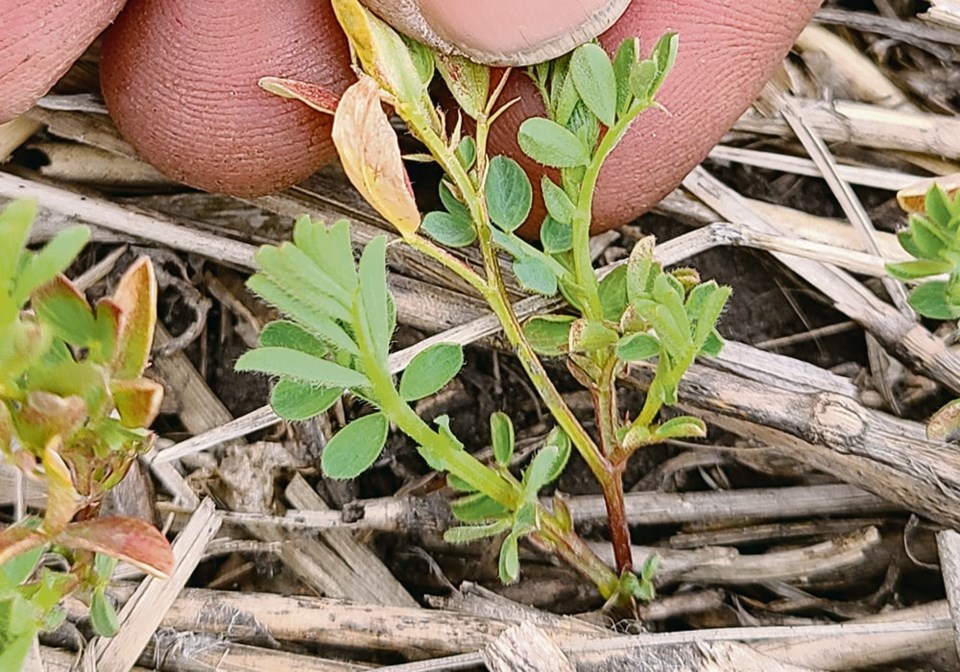WESTERN PRODUCER — Plant breeders have toiled to insert cold-tolerance genetics into North American crops since 1874, when the first Russian Mennonite immigrants brought seed stock to Kansas.
It has not been a random hit-and-miss endeavour, nor has it focused only on cereals. Cold-tolerant genetics are now found in a variety of commercial field crops, giving farmers new tools in expanding crop rotations and cash flow.
Winter wheat and fall rye have been mainstream crops for five decades. Farmers appreciate that fall-seeded crops make better use of soil moisture, equipment and manpower, along with higher yields and better grades.
But it takes tools to build something of value. What are the tools used by today’s researchers?
Over the past 150 years, plant breeders have kept meticulous records of successes and failures. But with millions of data points over that length of time, it’s been a gargantuan task to optimize the information and increase the number of commercially viable fall-seeded crops.
That was the assessment in the early 1990s of retired CDC winter wheat breeder Brian Fowler. Fowler began his cold-tolerance research in 1971, posting 15 registered winter wheat varieties in his career.
By 1990, he realized he was sitting on a treasure trove of data that could contribute to the development of fall-seeded crops in the future. But the future Fowler envisioned extended far beyond winter wheat. He realized the genetics of winter survival were not unique to winter cereals. This trait could be inserted into virtually any crop commonly grown on the Prairies.
To organize and use this massive volume of cold-tolerance data, Fowler began working in 1996 on a project he called the Winter Crop Survival Model. To date, this technology has been applied to canola, camelina, peas and lentils.
The collaborator in this project has been Ken Greer of Western Ag. In a phone interview, Greer said they had clearly defined criteria in the early stages of inserting cold tolerance into an existing prairie crop, and in building the model.
“Our first concern wasn’t yield. It’s what we learned from the field. We know the crops have good yield potential, that’s why we selected them. Now we need to make them survive the winter,” said Greer.
“We had winter wheat and winter lentil plots in Saskatoon planted into chem fallow. Bad idea maybe, but it pushed the two crops to their limit. The winter wheat made it through with about 75 percent damage. The winter lentils are just a little more tender. They didn’t quite make it. They were right on the bubble.
“Which was great actually, because that’s what Winter Crop Survival Model predicted. It meant the data Brian put into the model 30 years ago was right on target. So the model is very useful in transferring cold tolerance to other prairie crops. Which is exactly what we’re doing.”
In 2002, Greer started re-building the model with Fowler, which was still in MS basic code. Greer and Western Ag helped deconstruct the original old code winter crop survival system and rebuild it as a more user-friendly platform.
The upgraded version not only expands the range of winter cereals, such as barley and oats, but also includes broadleaf crops like winter peas and winter camelina.
Perhaps the most significant crop on the list in winter lentils. The model also now includes the winterkill risk factors for specific combinations of locations and crops.
In 2021, the paper Fowler and Greer published on the survival predictor won an award from the Crop Science Society of America. The paper Modeling Winter Survival in Cereals: An Interactive Tool is available on the system website.
“Farmers can access the entire system for free. Dr. Fowler is a great mentor. He focuses on giving back to farmers. His life’s work is in the algorithms. His algorithms are available for people to learn from, use and copy, no charge.
“Since we produced the original paper, we’ve been collaborating with a number of winter crop researchers to upgrade the algorithms and incorporate more knowledge. More testing and validation make the system more accurate. We’re working with plant breeders in Germany, Poland, Quebec and, of course, all the researchers across the Prairies.”
After Fowler retired from personal involvement in developing new varieties, he focused on exploring the genetics of cold tolerance. This deeper knowledge has opened the door to new winter crops, including broadleaf winter crops. Greer said the research Fowler documented in his career is in the crop survival model.
“But it’s not all genetics. Each individual plant has to harden against the cold. It has to condition itself just like a boxer conditions himself before a big fight. Winter is the big fight for a fall-seeded plant, so it has to be hardened, conditioned. It has to grow enough before winter.
“We started with three winter lentil varieties. One didn’t look so good, so we dropped it from the trials. We’re getting our best survival and yield from SuperCool.”
Greer said gathering good data on winter crops is a bigger challenge than data collection on spring crops. This past winter, some batteries in data collection stations went dead in the coldest periods. Data from those locations go into the trash.
It’s like the old farmer saying, “There’s always next summer.” Greer echoes the same sentiment. “There’s always next winter.”
The Winter Crop Survival Model can be found at .




